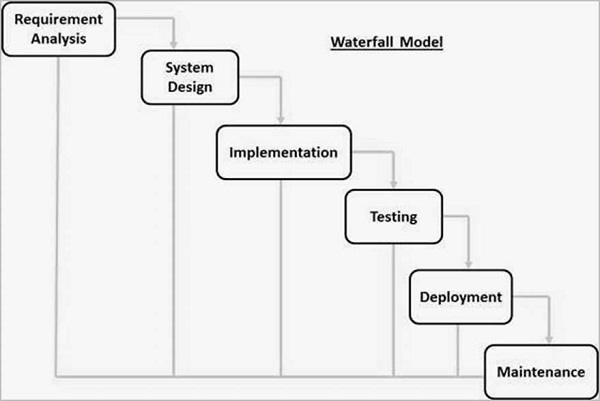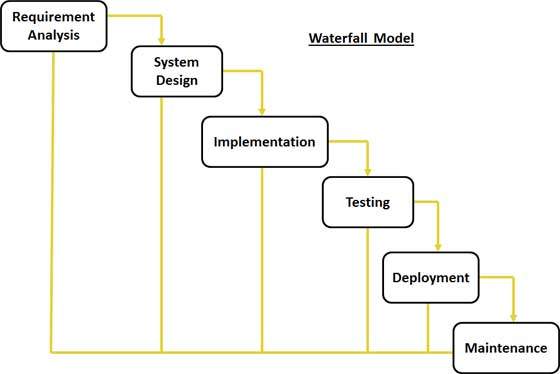The Waterfall Model was first Process Model to be introduced. It is also referred to as a linear-sequential life cycle model. It is very simple to understand and use. In a waterfall model, each phase must be completed before the next phase can begin and there is no overlapping in the phases.
Waterfall model is the earliest SDLC approach that was used for software development .
Waterfall Model design
Waterfall approach was first SDLC Model to be used widely in Software Engineering to ensure success of the project. In “The Waterfall” approach, the whole process of software development is divided into separate phases. In Waterfall model, typically, the outcome of one phase acts as the input for the next phase sequentially.
Following is a diagrammatic representation of different phases of waterfall model.
Advantage
The advantage of waterfall development is that it allows for departmentalization and control. A schedule can be set with deadlines for each stage of development and a product can proceed through the development process model phases one by one.
Development moves from concept, through design, implementation, testing, installation, troubleshooting, and ends up at operation and maintenance. Each phase of development proceeds in strict order.
Disadvantage
The disadvantage of waterfall development is that it does not allow for much reflection or revision. Once an application is in the testing stage, it is very difficult to go back and change something that was not well-documented or thought upon in the concept stage.
More info: Here!









